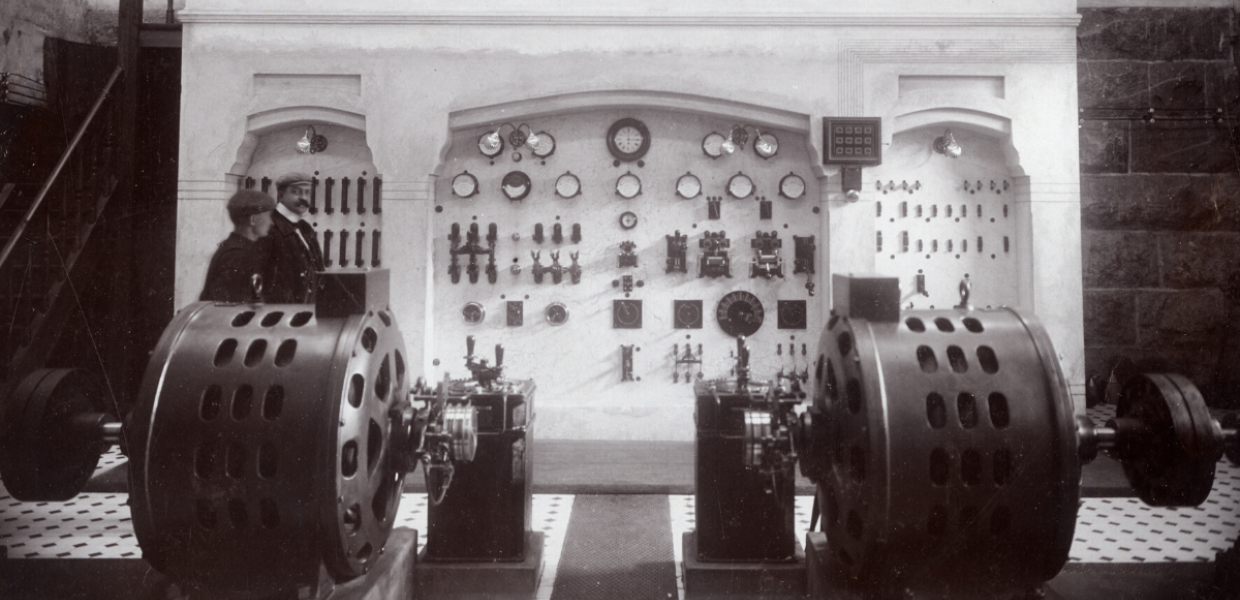Europeana and IIIF 3D: next steps and added dimensions?
A recent edition of the online journal EuropeanaTech Insight invited contributors to the Europeana Task Force on 3D content to discuss their institutions, projects and products related to 3D presentation of digital cultural heritage. In an abridged post for Europeana Pro News, we explore one of these articles focusing on some of the challenges the sector faces in the quest for interoperable 3D models, written by Ronald Haynes.

- Title:
- Nokia pappers- och cellulosafabrik, Finland.
- Creator:
- Edlund
- Date:
- 1902
- Institution:
- Tekniska museet
- Country:
- Sweden
- Copyright:
- Public Domain
Interoperability and 3D
If space is the final frontier, then we naturally turn to 3D images and models to help us explore and express that frontier. For the many aspects of space, and of our world, we have widespread options to produce good 3D models which are increasingly available to specialists and the general public alike, including on common devices. However, the many ways people scan, process, adjust, store, present and use those models challenges us to readily share them, whether in their present state or sustainably preserved to enable continued sharing well into the future.
The IIIF 3D Community Group (International Image Interoperability Framework 3D group) has been an enthusiastic partner to the work of the 3D content in Europeana Task Force, and is working with many 3D-active groups and developers aiming to produce practical and interoperable 3D models, along with 2D (IIIF) image and 3D model integration. But what are some of the challenges they face?
Addressing the challenges of interoperable 3D
A combination of collaborative casework and community development has helped IIIF to address many of the challenges associated with the co-ordinated use of 2D images, notably in the cultural heritage and GLAM areas. The efforts to extend those developments to be more inclusive of 3D materials does, however, literally add extra dimension and complexity to the mix.
Among the challenges facing the collaborative community work of the 3D Group, there are key considerations for preservation options. Keeping sight of sustainability and long-term usability is a helpful lens through which to focus preservation efforts, including regular reviews of practical approaches to the scanning and capture or construction of models. As part of the process of reducing what is for many an unmangeable number of options and moving towards a more manageable set of formats, it will also be important to address the variety of 3D file formats. While niche or specialist file formats may remain for various purposes, improving file conversion options will continue to help in the transition to the more popular and increasingly common formats.
Additionally, there are challenges around finding or collectively clarifying the full set of equipment, process, people and capabilities needed for 3D production - ideally in an increasingly interoperable format. We will need to explore options for smaller and less well-funded institutions to access suitable workflow and production options (through better joint funding or other means of ensuring the growth of interoperability).
Building on open standards for text and 2D images and working together to ensure the seamless combination with 3D objects should help reduce existing digital divides and increase overall accessibility, by ensuring the broadest overall data interoperability. To adequately attempt to address these challenges we plan to continue to liaise and work with other 3D-active researchers and groups, to build the alliances and collaborative efforts. We are reviving some previously-articulated 3D technical challenges (from a 2017 IIIF meeting at the V&A museum in London) to combine with more recent developments, as well as gathering user needs and stories. We also are planning to organise further events to clarify a set of suitably representative examples and use cases - find out more.


